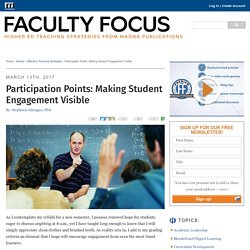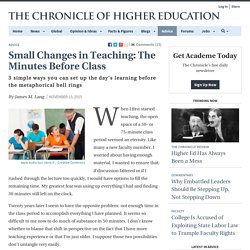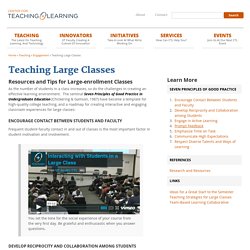

Participation Points: Making Student Engagement Visible. As I contemplate my syllabi for a new semester, I possess renewed hope for students eager to discuss anything at 8 a.m., yet I have taught long enough to know that I will simply appreciate clean clothes and brushed teeth.

As reality sets in, I add to my grading criteria an element that I hope will encourage engagement from even the most timid learners. Often labeled “participation points,” this topic has been explored from myriad perspectives in any number of books and articles published in the last 20 years. Some approaches to participation include using discussion to facilitate teaching and learning, implementing standard-based grading to eliminate participation points, or creating rubrics for participation to make standards visible to the students. And here’s the rub—first-year students often don’t know why engagement is important either in their classroom or their learning. 18 ways to engage the college classroom (Part III) In Part I and Part II of our blog series on engaging the college classroom, winners of The SAGE Teaching Innovations & Professional Development Award shared how they hold their students’ attention throughout a class period.

Below, read about a few more top tips from our 6 remaining winners. Stephanie L. Bradley “I incorporate a variety of in-class activities to maximize student engagement across learning styles. For example, before we watch a documentary, students receive a list of questions answered using information presented throughout the video. “Student engagement begins with motivation. Katherine Lyon “Additionally, I build student engagement by creating lessons that center around their involvement. 11 Tips to Engage and Inspire Adult Learners - eLearning Industry. Center for Teaching and Learning. Discussions can play a valuable role in lecture courses, seminars, quiz sections, labs, studios and a variety of other settings.

A well-planned discussion can encourage and stimulate student learning and add variety to your class. While “good” discussions can be a powerful tool for encouraging student learning, successful discussions rarely happen spontaneously. Preparing ahead of time will help you define a clear focus by establishing goals and student expectations for the discussion. Planning ahead Establish goals for the discussion: Determine goals based on an assessment of what material students already understand and the areas that they need to explore.Decide what you want students to learn from the discussion.
Communicate clear expectations to students: Tell students what you expect the discussions to accomplish.Hand out study questions before your discussion, so students can think about concepts or respond in writing. Clarify and summarize key points during the discussion: 18 ways to engage the college classroom (Part III) Excel Diff: Easy ways to find (and highlight) the difference between data sets. FACULTY FORUM. Ten Tips for Motivating Students. At this point in the year, students’ motivation may be flagging.

Some may be overwhelmed by all the work they have to do for their classes (on top of their responsibilities at their jobs, at home, and in their relationships). Others could be frustrated that they’re not “getting” the material their instructors are covering, and may feel ready to give up. And, a few may just be focused on Spring Break! Yes, students are responsible for keeping up their own motivation. However, there are ways that you can help them build their enthusiasm and stay focused on their success. 1. 2. 3. 4. 18 ways to engage the college classroom (Part III) Small Changes in Teaching: The Minutes Before Class. When I first started teaching, the open space of a 50- or 75-minute class period seemed an eternity.

Like many a new faculty member, I worried about having enough material. I wanted to ensure that, if discussion faltered or if I rushed through the lecture too quickly, I would have options to fill the remaining time. My greatest fear was using up everything I had and finding 30 minutes still left on the clock. Twenty years later I seem to have the opposite problem: not enough time in the class period to accomplish everything I have planned. It seems so difficult to me now to do much of substance in 50 minutes. In my early years I would walk into the classroom with just a minute or two to spare and spend the final moments before class putting my papers in order, preparing whatever technology I might be using that day, and gathering my thoughts.
Teaching Large Classes. As the number of students in a class increases, so do the challenges in creating an effective learning environment.

The seminal Seven Principles of Good Practice in Undergraduate Education (Chickering & Gamson, 1987) have become a template for high-quality college teaching, and a roadmap for creating interactive and engaging classroom experiences for large classes: Encourage Contact between Students and Faculty Frequent student-faculty contact in and out of classes is the most important factor in student motivation and involvement. You set the tone for the social experience of your course from the very first day. Be grateful and enthusiastic when you answer questions. Develop Reciprocity and Collaboration among Students Learning is enhanced when it is more of a team effort than a solo race. The four components of TBL are permanent teams, readiness assurance, application activities, and peer evaluation.